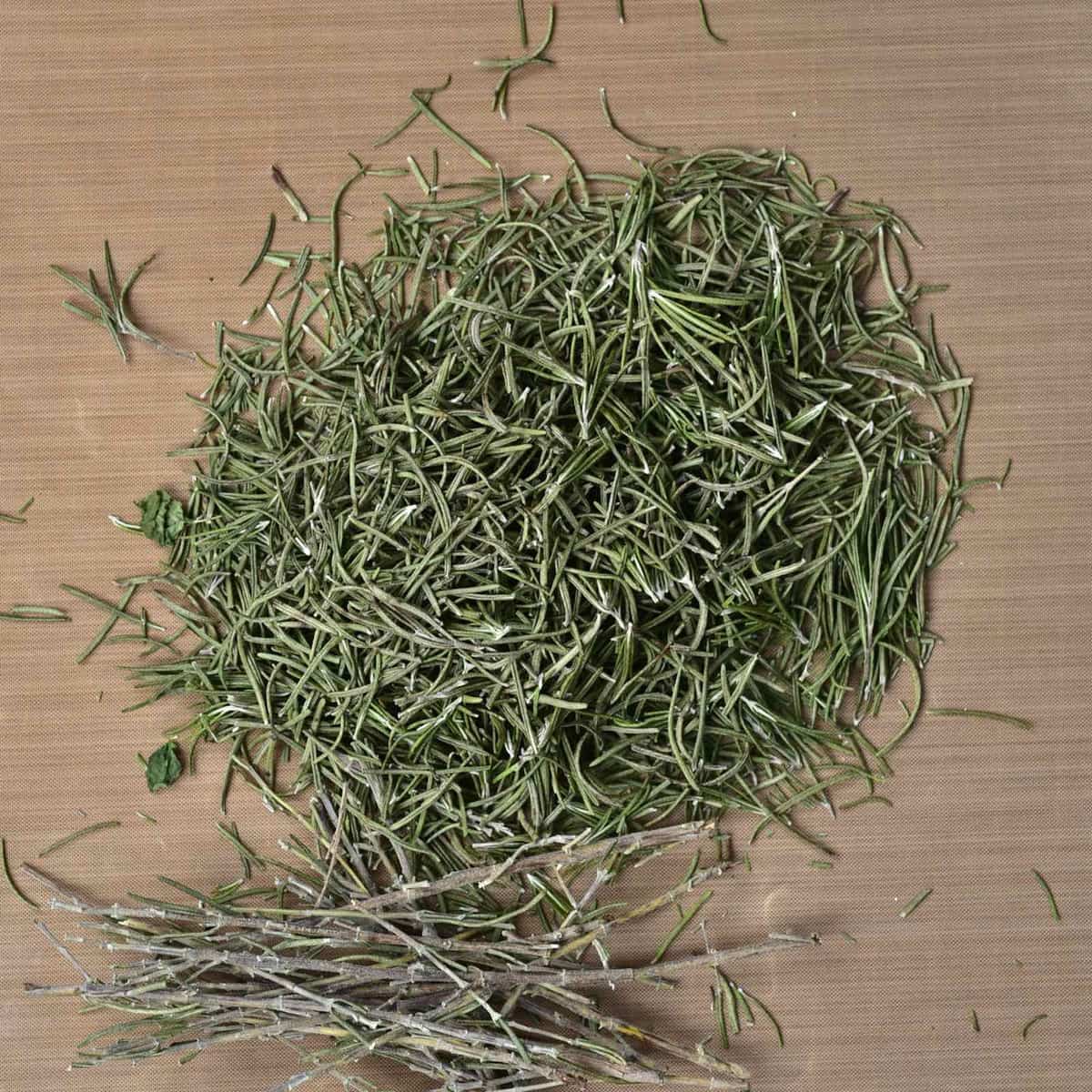How To Dry Rosemary and Store It (3 Methods)
5.0
(8)
Your folders
Your folders
Prep Time: 5 minutes
Total: 125 minutes
Servings: 1

Ingredients
Export 1 ingredients for grocery delivery
Instructions
Step 1
To dehydrate rosemary, first, rinse and pat the springs dry. Then, lay them down in a single layer across your dehydrator tray/s, with some space between (so the air can circulate for even, quicker drying).
Step 2
Dry at 95º-105ºF/35º-40ºC for between 2-4 hours until the needles are brittle and easily separate from the stem. The leaves should snap rather than bend.Check on them after the two-hour point and every 15-20 minutes, until ready. Depending on overall humidity (of the fresh rosemary and of the surrounding area) drying time could be longer, up to 8 hours.
Step 3
After rinsing and drying the rosemary, lay them out on a parchment-lined baking tray/s with space between for air to circulate.
Step 4
Place in the oven at its lowest temperature, ideally below 105ºF/40ºC. Depending on the temperature, this process will take a different amount of time. I suggest checking on them at the 1-hour mark and every 15 minutes after that.Dry at 210ºF/100ºC for 1 hr or at 150-175ºF/65-80ºC for about 2hrs or less.If your ovens lowest temperature is quite a lot higher than 105ºF/40ºC, it may be best to use a wooden spoon to slightly prop the oven door open (this isn't great for energy usage but will lower the overall temperature within the oven, so you don't 'cook' your rosemary.Drying rosemary this way shouldn't take more than a few hours.
Step 5
This is best for those who live in fairly dry climates. The process will also be sped up for those in warmer climates. Make sure to clean your rosemary well, and then gently pat it dry with a kitchen towel.I like to make a DIY hanging apparatus by simply typing a bit of twine/string between two areas in my kitchen (choose a well-ventilated area that isn't in direct sunshine).Alternatively, you could hang them from a clothes hanger, or even purchase and use a herb drying rack.
Step 6
Tie the sprigs of rosemary together near to their base with more string - like a bouquet (you can make several smaller ones) - and attach this string to your 'hanging apparatus'.
Step 7
Allow the sprigs to hang until they dry. This time can vary based on the weather, humidity, and ventilation. In the UK, this can take between 2-3 weeks, depending on the weather.Due to the long drying time, it can be a good idea to cover the herbs with a ventilated 'protective covering' like a paper bag or nut milk bag - to avoid dust settling on the drying rosemary herbs (and little critters).Check on them regularly to make sure no mold is growing. Once the leaves are brittle (and usually beginning to fall from the sprig), they are ready.
Step 8
Feel free to separate your dry rosemary into full leaves and some to be ground into a powder (to avoid the hard texture in recipes).To make ground dried rosemary, place the leaves into a coffee/spice grinder or a food processor (though you'll need to add enough to make the mechanism work).Once ground, you can sieve the mixture and re-process the remaining larger pieces once more.
Step 9
Once dried, separate all the leaves from the stems by gently rubbing them (do this over a bowl) and then store them in a glass jar.Rosemary is preserved best when stored in a cool, dark location like a kitchen cupboard. Make sure to store in an airtight container to prevent any moisture from entering, which can cause mold.I always aim to use my dried rosemary within 6 months for optimal freshness, though it will last up to 12 months even.